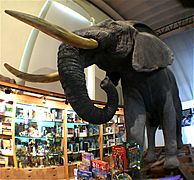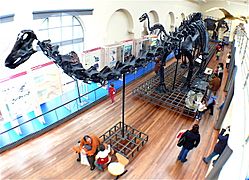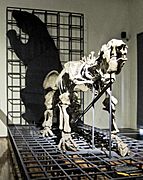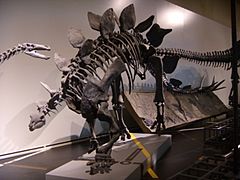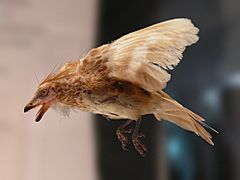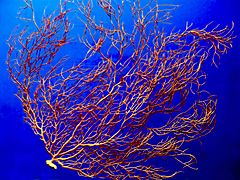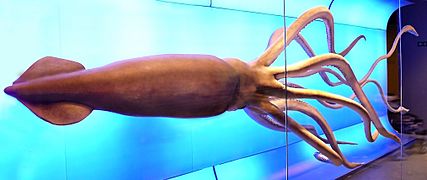Museo Nacional de Ciencias Naturales facts for kids
| Museo Nacional de Ciencias Naturales | |

Museum's building
|
|
| Established | 1771 |
|---|---|
| Location | Madrid, Spain |
| Type | Natural history museum |
| Visitors | 500,000 per year |
The National Museum of Natural Sciences (in Spanish, Museo Nacional de Ciencias Naturales) is a fantastic natural history museum located in Madrid, Spain. It's like a huge classroom where you can learn all about the natural world! This museum is part of the Ministry of Science in Spain. It is also one of Spain's important National Museums. The Spanish National Research Council (CSIC) helps manage it.
Contents
The Museum's Story
The museum's history began a long time ago. It started in 1771 as the Real Gabinete de Historia Natural. This means "Royal Cabinet of Natural History." It was created by King Charles III.
How the Museum Grew
In 1815, the "cabinet" became the Real Museo de Historia Natural. This means "Royal Museum of Natural History." The museum changed its name a few times. It got its current name in 1913. The first collection came from a Spanish merchant named Pedro F. Dávila.
New Museums from Old
Over time, the museum grew very large. In 1867, some parts of it became separate museums. These included an Archeology museum, a Botanic Garden, and a Zoologic Garden. This helped each area focus on its own special collections. In 1987, the museum was updated and made bigger. It used money from two smaller museums to do this.
Amazing Collections
The museum has many incredible things to see. Here are some of its most famous items:
- The first-ever skeleton of a Megatherium americanum. This giant sloth came from Argentina in 1789. It's called a holotype because it was the very first one found and studied.
- A huge Diplodocus skeleton. This dinosaur was a gift from Andrew Carnegie to King Alfonso XIII of Spain in 1913.
-
Section of Natural History
Diplodocus and other fossils -
Section of Natural History
Megatherium skeleton -
Section of Natural History
Stegosaurus skeleton -
Mediterranean section
Giant squid model
Scientific Research
The museum is not just for showing things. It also has scientists who do important research. They study many different areas of natural science.
Research Departments
Here are some of the main research departments at the museum:
- Biodiversity and Evolutionary Biology: Scientists here study all the different kinds of life on Earth. They also look at how living things change over time.
- Evolutionary Ecology: This group studies how living things interact with their environment. They also look at how these interactions change through evolution.
- Paleobiology: These scientists study ancient life, like dinosaurs and other fossils. They learn about life forms that lived millions of years ago.
- Vulcanology: This department focuses on volcanoes. They study how volcanoes form and erupt.
- Geology: Geologists at the museum study the Earth itself. They learn about rocks, minerals, and how the Earth's surface changes.
See also
 In Spanish: Museo Nacional de Ciencias Naturales para niños
In Spanish: Museo Nacional de Ciencias Naturales para niños


